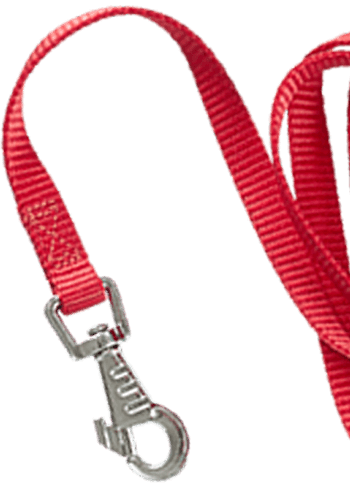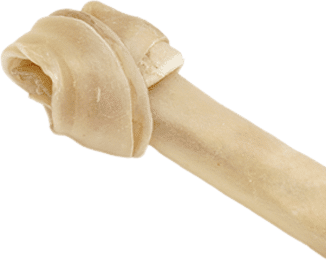


Most pet lovers know how vital exercise can be for their furry friends. Exercise is an important factor in maintaining your dog’s health and helping them live their best lives. Establishing a reliable exercise routine also deters dogs from destroying your house during a burst of high energy.
Our Golden Retriever pals are renowned for their happy-go-lucky personality — these dogs are young at heart long after growing from the puppy stage. However, Goldens are also well-known for their love of eating, whether it’s their dog food, your favorite shoe, or your children’s crayons.
No matter how much you love your dog, nobody likes to find chew marks on their prized possessions. Dogs who receive too little exercise will have a round physique. But they are also likely to exhibit these unwanted behaviors. On the flip side, too much exercise can harm a Golden Retriever’s joints and muscles.
It’s essential to find the perfect balance of dog park outings (and other activities) with rest so you can raise a well-behaved, healthy dog. This article will review everything you need to consider when creating an exercise routine for your Golden Retriever. We’ll also look at a few fun playtime activities.
Very young Golden puppies only need a few minutes of exercise a day, although the length of time increases with each month of age. But before discussing the details of Golden Retriever exercise requirements for the puppy stage, it’s important to note potential injuries that could lead to complications down the road.
When taking your puppy for walks or playing with them in the backyard, you’ll want to make sure you’re giving them enough exercise without over-exerting their joints.
Our growing companions do not realize how delicate they are within their first year of life. Luckily, pups have their humans to keep an eye on their development and ensure they aren’t doing anything that might cause harm while they’re playing around.
Similar to the soft spot found on human infants, puppies have delicate areas in their legs where their bones haven’t fully formed. Growth plates help cartilage grow into bone as puppies mature. However, they are very sensitive and can damage easily.
Your puppy’s bones will be fully grown when they are around 18 to 24 months old. In the meantime, this means your Golden Retriever pup should avoid activities that have a high potential for growth plate injuries.
Here are some activities that could hurt puppies who are still growing:
Injuries to growth plates can hinder bone growth and, in extreme cases, cause uneven limbs when your pup grows up. Therefore, it’s best to avoid these activities before your Golden Retriever is fully grown — no agility training or long-distance running just yet.
Unfortunately, Golden Retrievers are a breed at risk for developing hip dysplasia. This disorder can start as early as four months old but typically occurs as a dog ages.
Obesity, excessive exercise, and too little exercise can cause hip dysplasia in dogs. This is why finding the perfect amount of activity for your dog is crucial to maintaining health throughout his life.
In the first few months of life, your pup will be curious to explore the world around them. Most of the exercises for young dogs focus on socialization and behavior training. Learning these tools will ensure your dog is friendly, obedient, and ready for higher-level exercise routines later in life.
Typically, a Golden Retriever puppy should have 5 minutes of exercise for every month of age. With this in mind, let’s explore different activities for Golden puppies as they venture through their first months.
At 9 to 12 weeks of age, a Golden Retriever puppy will begin integrating into your family. It’s important to reinforce good manners and positive social play. Teach your puppy simple commands like “yes” and “no” and reward them upon successful responses.
Socialization during this age is crucial, so their primary source of exercise should be playing with you and other members of your household. This includes any other dogs or pets you have in the home. But remember to keep a close eye on your furry friends as they learn to interact with each other.
At 13 to 16 weeks, your Golden Retriever will start teething. Never underestimate a puppy’s desire to put anything and everything in its mouth during this time!
Playing with chew toys will be a great opportunity for your puppy to learn what they can and cannot munch on. Do this early to ensure that your pup doesn’t ingest anything harmful or ruin any of your family’s belongings.
You might see some challenging behaviors arise around 16 to 24 weeks of age. Think of the puppy as a teenager at this point – they’ll be testing your boundaries and learning their place in the home.
An exercise playpen with lots of toys, food, and drink is an excellent idea to keep the pup entertained while also keeping them out of trouble.
From 6 to 12 months, a Golden Retriever puppy will have lots of energy, and an exercise routine that includes physical and mental exercise will be essential. Here’s a list of some great activities well-suited for puppies:
If you’re concerned about exercising and training a young puppy, be sure to get your Golden Retriever from a reputable breeder that begins training at a young age. This way, your puppy will already know basic commands, and they’ll be able to more easily integrate into your home.
Reputable breeders are also more likely to help you with the transition between their facilities and a puppy’s new home.
At Snowy Pines, for example, our customer communications specialist Julia reaches out to families at 2 days, 1 week, and around the 25-30 day mark after homecoming to answer any questions about training or your puppy in general.
Exercise isn’t the only thing that will keep your Golden Retriever puppy happy and healthy while they grow. A puppy’s routine schedule should allow for frequent naps.
One minute your Golden puppy could be awake and alert, and the next minute they’re snoozing. It’s important to let your puppy sleep. The world is a big place for little pups, and they need relaxation after stimulating activities.
Snowy Pines’ guide “To Get A Puppy or Not” provides an excellent example for creating a reliable routine in the first six months of a puppy’s life. This guide will help you establish your new Golden Retriever’s playtime and nap schedule.
Over 150 years ago, Golden Retrievers were bred to be high-energy hunting companions. Therefore, this breed of dog requires lots of exercise to ensure they’re getting the activity they need to thrive. Enough exercise will also minimize the chances that your Golden will engage in destructive behaviors around the home.
Also, Golden Retrievers also love to eat, so exercise will be important to prevent weight gain.
A healthy adult Golden Retriever should receive 40 to 120 minutes of exercise per day, broken up into two sessions. And because Goldens are easy to please, they will be content with a wide range of different activities.
This breed loves going on nice, long walks through nature. Walking is a great low-impact exercise for dogs and their owners. Try to go out for about an hour when walking to give your dog (and you!) plenty of activity. You can also visit a fenced dog park for a game of fetch.
Golden Retrievers also love mental stimulation, which keeps their mind active. A good mix between high stimulation, low impact, and intellectual exercises will keep your beloved pet physically and mentally healthy.
However, it’s essential to watch for signs of exhaustion from your favorite fluffy pal. There will be body signals from Golden Retrievers that indicate they’ve had too much exercise. If you see your Golden Retriever sitting or lying down during their daily walk or exercise routine, your dog is tired and needs to relax.
If your adult dog is overweight and needs a lot of exercise, try gradually increasing their exercise time by five minutes every day or two to increase their stamina. If this still proves to be too much for your pet, you should seek advice from a vet about your dog’s nutrition and exercise routine.
In addition, dogs who receive infrequent exercise will exhibit some undesirable behaviors. Without proper daily exercise, Golden Retrievers can become socially withdrawn, destructive, or hyperactive. If you have difficulty meeting their exercise needs, consider hiring a dog sitter or investing in interactive toys.
Lastly, keep an eye out for “zoomies.” If you don’t know what zoomies are, it’s a period of time where your pet will have a short burst of high energy, typically exhibited by running around the house.
This is an entirely normal activity and provides an excellent opportunity for playtime. However, high-frequency zoomies could indicate they aren’t getting enough exercise.
Our precious pets have a shorter lifespan than humans. Golden Retrievers are classified as seniors when they reach eight years of age.
As Golden Retrievers age, you may see their energy levels decrease. This is normal – much like older adult humans, senior Golden Retrievers tire easily.
When high-energy tasks like long-distance running and playing fetch become hard, walking and mentally stimulating exercises are great ways to keep senior dogs healthy and active.
But always remember to watch for signs that your pet needs rest. If your senior Golden takes a long time to get up while on a walk, this signals that they are tired. Consider taking them home instead of continuing the exercise.
If you notice your senior dog is frequently extra lethargic, you may want to visit a veterinarian. An exam from the vet will spot any possible concerns with your Golden Retriever’s health and give you some suggestions for an appropriate exercise routine.
Remember, as dogs age, they can become susceptible to hip dysplasia from too much or too little exercise.
Now that we’ve covered the length of exercise time for Golden Retrievers at every age, let’s discuss some of the best exercises to keep our canine friends healthy.
Golden Retrievers were bred to be hunting companions – needless to say, they love being in nature. Long walks where they can stop and sniff their environment will mentally and physically stimulate your Golden.
In addition, early Golden Retrievers were bred to be natural swimmers, so dock diving is a great physical exercise. Dock diving is the game of fetch with the addition of water: your dog runs after the object, swims to fetch it, and returns the object to you.
Swimming is a wonderful activity, especially for senior Goldens who may be experiencing the aches and pains of old age. This activity is easier on their joints but still gives them an appropriate amount of movement.
Most dogs love playing fetch or catching frisbees, and Golden Retrievers are no different. This is a great activity for children who want to participate in playtime with the family pet.
Golden Retrievers are well-known for their obedience during agility courses. Creating an obstacle course where your dog can practice different exercises like running and jumping will keep your furry pal entertained for a long time.
At 1.5 years of age, you can teach a Golden Retriever to go on long-distance runs with you. If your dog is trained to walk safely and will stay to one side of your body, you can introduce running.
Train your dog to understand short phrases like “let’s run” and “slow down” so you can manage their behavior on a long-distance run. However, remember to start slowly. Humans can’t run a few miles without strength training, nor can dogs.
Lastly, mental stimulation is vital to keep a dog’s mind sharp. Activities like hide and seek with treats, puzzle toys, and trick training are great brain exercises to get your dog thinking. Mental exercise is a great option for rainy, cold days when it’s hard to get outside for a long period.
As a reminder, dogs can never have too much positive reinforcement for their good behaviors. You’ll want to make sure to offer lots of praise and attention, especially after your furry friend has completed an exercise activity.
Golden Retrievers are an energetic dog breed that loves playtime and requires lots of exercise to keep them from exhibiting unwanted behaviors. Exercise routines should begin from a young age and continue throughout a dog’s lifetime.
However, you should always watch for signals that your dog is tired or overworked. This is especially true for puppies who could damage their growth plates with too much exercise, as well as senior Goldens, who may need to scale back their normal 40 to 120 minutes a day.
We all want our fluffy companions to live long and healthy lives. By establishing regular exercise into their daily routine, you can help keep your Golden Retriever physically and mentally fit.
At Snowy Pines, we start teaching our puppies lifestyle skills from a young age. By the time they’re ready to come home with you, they are already familiar with the essentials, so they’ll be ready to start their exercise routine in their new home. Contact us today to learn about our available English Cream Golden Retriever puppies!